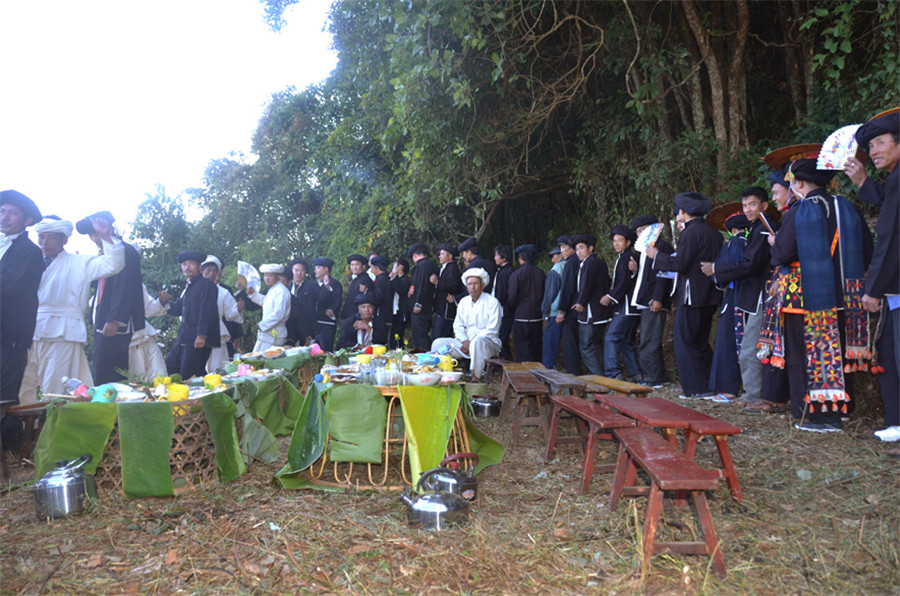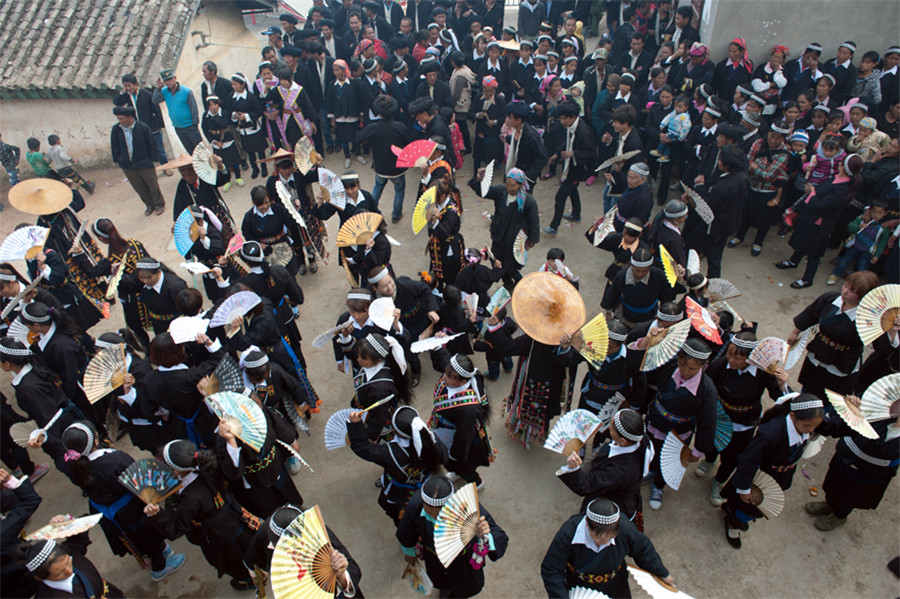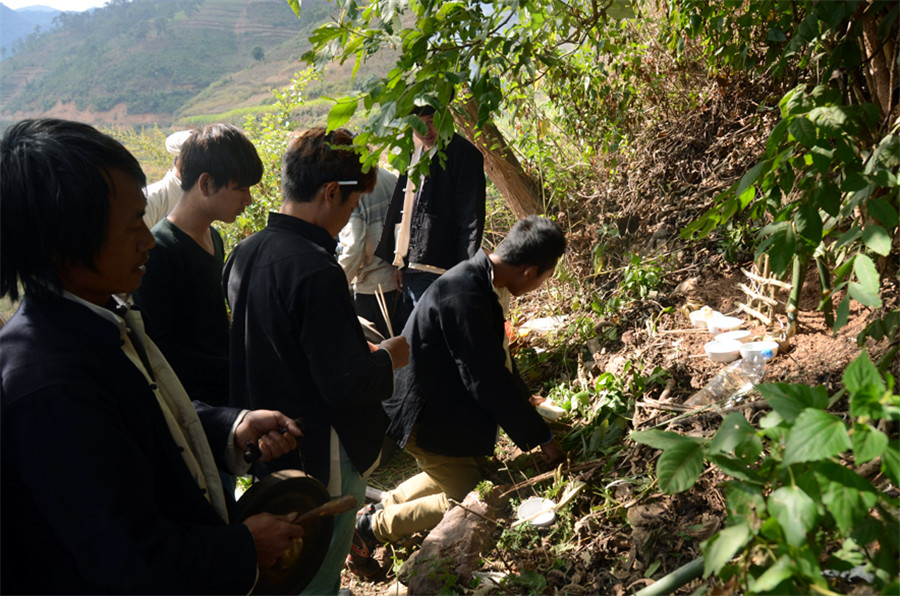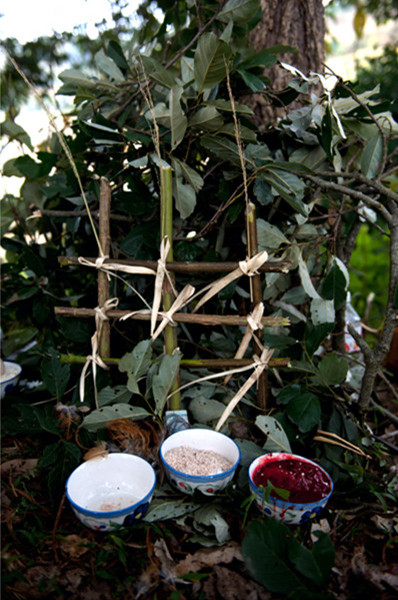Jiujixian Sacrafice of Hani Ethnic Minority in Yuanjiang County, Yuxi
Basic Information
The Nine-Sacrifice Ritual (Hani: Gui Ji Tuo 归基托) is the oldest folk sacrificial activity of the Hani people (哈尼族). It is practiced in the three natural villages of Pugui (浦贵), Puhai (浦海), and Shitong (施通), located in Yinyuan Town (因远镇), Yuanjiang Hani, Yi and Dai Autonomous County (元江哈尼族彝族傣族自治县), Yuxi City (玉溪市). These three villages were founded by three Hani brothers during the Hani migration. Historically, the Nine-Sacrifice ceremony was hosted in rotation among the three villages.
Historical Background
The ritual was interrupted and nearly lost in the 1950s, but was successfully revived in the early 1990s in Pugui Village (浦贵村), which has since become the main place for its transmission and practice.
Ritual Activities
Sacrifice Cycle
- Minor Sacrifice: Once every three years, lasting 3 days
- Medium Sacrifice: Once every six years, lasting 5 days
- Major Sacrifice: Once every nine years, lasting 7 days
Sacrifice Timing
The ceremony always begins on the first Chenlong Day (辰龙日) in the second lunar month.
Ritual Procedures and Ceremonies
There are 9 major categories consisting of 26 sets of movements, including:
- Gu Chichi Wo (咕哧哧涡): Circling the village and performing pre-sacrifice offerings
- A Nu Cai Zha (阿奴才咋): Agricultural offerings in the forest to deities and ancestors
- A Bo Men Zu (阿波门祖): Depicts ancestors facing difficulties during migration
- Guo Duo Sa Zha (果多撒咋): Depicts couples working together, showing diligence and harmony
- A Ni Tuo Zha (阿尼托咋): Depicts childbirth and the continuation of the family line
- A La Cuo (阿腊搓): Outdoor dance showing courtship and traditional songs
- Ha Mi Na Ha Zha (哈咪那哈咋): Depicts the search for a bride and free love
- A Ren Pi (阿认皮): “Asking for flowers,” where childless couples seek blessings from those with virtuous children
- Zha Ze Ba Wo La (咋则把涡啦): “Clearing the table,” the closing ritual mirroring the opening ceremony
Cultural Significance
The Nine-Sacrifice Ritual is a historical epic of the Hani people, containing deep ethnographic value. Through this ritual, the Hani transmit knowledge about migration, livelihood, rice farming, love, childbirth, and a reverent worship of life.




Transmission and Protection
The Nine-Sacrifice Ritual is now recognized as an intangible cultural heritage of Yunnan Province (云南省). It is supported by the local government and cultural departments. Key inheritors of the ritual in Pugui Village include 13 individuals such as Chen Yufa (陈玉发) and Ni Kede (倪克德).
Methods of Transmission
- Oral Tradition and Demonstration: Elders teach the rituals directly
- Community Involvement: Young people participate in regular ceremonies
- Revival and Development: The ritual was restored in the 1990s and has been growing ever since
Protection Measures
Intangible Cultural Heritage
- In 2006, the Nine-Sacrifice was listed in the first batch of Yunnan’s provincial intangible cultural heritage.
- In 2024, Yuanjiang County (元江县) implemented cultural protection regulations, formally listing the Nine-Sacrifice as a protected project.
Government Support
The Yuanjiang County government provides legal, financial, and promotional support. Cultural festivals and exhibitions help raise awareness.
Community Participation
The local community in Pugui Village actively participates in preservation efforts, organizing events and cultural education to enhance awareness.
Cultural Value
The Nine-Sacrifice is an epic representation of Hani history. It safeguards traditions of migration, life, rice farming, courtship, and birth while instilling reverence for life. It holds great value for studying Hani culture and society.
Significant progress has been made in the transmission and protection of the Nine-Sacrifice. Through the dedication of inheritors, government support, and community engagement, this ancient cultural treasure is finding new life in the modern world.
For Chinese version please go to:
http://www.ynich.cn/view-ml-11111-1168.html













